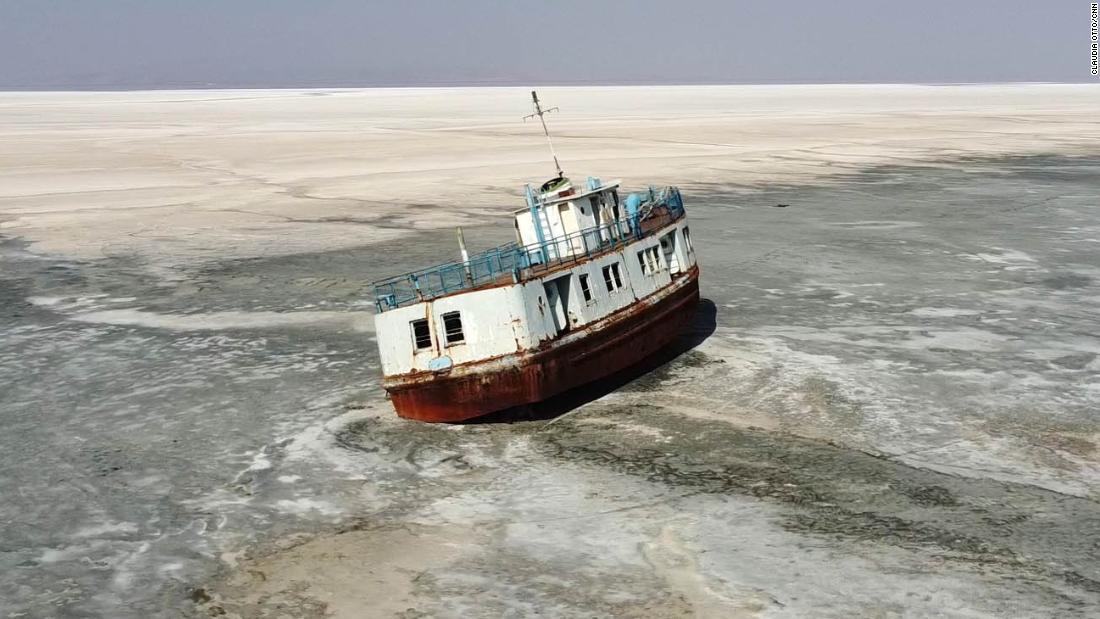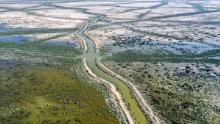Lake Urmia’s demise has been rapidly. It has much more than halved in size — from 5,400 square kilometers (2,085 sq. miles) in the 1990s to just 2,500 sq. kilometers (965 square miles) now — according to the Department of Environmental Safety of West Azerbaijan, 1 of the Iranian provinces where the lake is situated. There are now concerns it will disappear completely.
This kind of problems are familiar in a lot of sections of the Center East — the place water is only functioning out.
The location has witnessed persistent drought and temperatures so large that they are hardly suit for human daily life. Incorporate climate change to h2o mismanagement and overuse, and projections for the future of drinking water below are grim.
Some Middle Japanese nations around the world, which include Iran, Iraq and Jordan, are pumping large quantities of h2o from the ground for irrigation as they request to make improvements to their food self-sufficiency, Charles Iceland, the worldwide director of water at the Planet Resources Institute (WRI), advised CNN. That is taking place as they practical experience a lessen in rainfall.
“They are making use of more h2o than is available routinely by means of rain. And so groundwater levels are consequently slipping since you might be using water out a lot quicker than it is becoming replenished by the rainfall,” he reported.
Which is what’s going on in Iran, where a huge network of dams sustains an agricultural sector that drinks up about 90% of the water the state works by using.
“Both declining rainfall and raising need in these nations around the world are leading to quite a few rivers, lakes, and wetlands to dry up,” Iceland reported.
The repercussions of water getting even scarcer are dire: Locations could turn into uninhabitable tensions in excess of how to share and take care of h2o sources like rivers and lakes could worsen much more political violence could erupt.
In Iran, Urmia has shrunk mostly due to the fact so quite a few individuals have exploited it, and some of the dams constructed in its basin primarily for irrigation have decreased the move of h2o into the lake.
Iran’s water woes are currently a lethal problem. In one 7 days in July, at the very least a few protesters were killed in clashes with safety officers in demonstrations in opposition to water shortages in the country’s southwest.
The state is experiencing some of the driest ailments in five a long time, in accordance to the country’s meteorological company.
The Center East’s winters are projected to get drier the additional the globe warms, and although the summers will be wetter, the heat is expected to offset its drinking water gains, according to scientists’ most current projections revealed before this thirty day period by the UN Intergovernmental Panel for Local weather Change report.
“The difficulty is, with this whole temperature rise, regardless of what rainfall will appear will evaporate since it is so scorching,” Mansour Almazroui, director at the Middle of Excellence for Weather Alter Investigation at Saudi Arabia’s King Abdulaziz College, advised CNN.
“The other thing is, “This rain is not always likely to be typical rain. You can find heading to be severe rainfall, meaning that floods like those going on in China, in Germany, in Belgium, these floods will be a big issue for the Center East. This is seriously a big climate adjust difficulty.”
A research by the Iranian Vitality Ministry located the demise of the lake was extra than 30% attributable to local climate alter.
These adjustments are not only owning an effects on the amount of money of water offered, they are also influencing top quality.
Lake Urmia is hypersaline, meaning it can be incredibly salty. As it has shrunk, the salt concentration has elevated and gotten so intense, using it for irrigation is detrimental farmers’ crops.
Kiomars Poujebeli, who farms tomatoes, sunflowers, sugar beet, eggplant and walnuts close to the lake, explained to CNN that the salty water has been disastrous.
“The working day the soil will become unfarmable is not considerably away,” he explained.
A vicious cycle
In Jordan, one particular of the most drinking water stressed countries in the earth, people have grow to be used to living with quite little h2o.
A analyze revealed in the Proceedings of the National Academy of Sciences confirmed that Jordanians will have to halve their for every capita use of drinking water by the stop of the century. Most Jordanians on decreased incomes will dwell on 40 liters a working day, for all their desires — consuming, bathing and washing clothes and dishes, for instance. The regular American currently takes advantage of all over 10 situations that quantity.
In a lot of Jordanian residences, water just isn’t necessarily accessible just about every day, reported Daniel Rosenfeld, a professor with the Method of Atmospheric Sciences at The Hebrew University of Jerusalem.
“Jordan now has a important shortage of drinking water — drinking water reaches the residences in Jordan after or 2 times a 7 days, even in the cash Amman,” Daniel Rosenfeld, a professor with the Program of Atmospheric Sciences at The Hebrew University of Jerusalem. The cash truly has existential troubles appropriate now, already,” Rosenfeld claimed.
Groundwater degrees in parts of the state are dropping by perfectly over one particular meter a year, scientific studies clearly show, and waves of refugees from quite a few countries in the region have put extra force on the already stressed resource.
The secretary-standard of Jordan’s Water Authority, Bashar Batayneh, told CNN that the region demands additional funding from the rest of the planet to deal with this amplified need for drinking water.
“Jordan bore the significant load of the Syrian refugee crises on behalf of the worldwide group and was deeply impacted about h2o. Refugees price the drinking water sector about $600 million for every calendar year though Jordan acquired a portion of this quantity from the worldwide group,” he explained.
He included that Jordan experienced a great deal significantly less rain in 2020 than it did the prior yr, putting additional than a quarter of drinking water methods at danger and halving ingesting water resources.
But it truly is not only weather change. The region depends on the Jordan River method, which also operates by means of Israel, the West Financial institution, Syria and Lebanon, and dams constructing together the rivers have seriously reduce the circulation of water movement to Jordan. Jordan, way too, works by using canals to redirect the river’s waters for irrigation. Conflict has flared quite a few instances about the river process in the past.
Jordan, Israel and Syria have gotten greater at coordinating management of the river procedure they count on, but tensions often erupt. Gurus have lengthy warned that drinking water scarcity worsened by local weather improve could lead to more conflict.
Jordan has little option but to obtain big quantities of h2o from Israel, which has an monumental desalination plan, in which it eliminates salt from seawater to make it in good shape for human intake. But desalination is electricity-intense — applying up substantial quantities of energy power that is not nevertheless inexperienced and renewable, and only adds to worldwide warming, a big driver of drinking water shortage in the initially spot.
As the climate continues to heat and h2o operates scarce, aspect of the answer in the Center East will have to require decreasing h2o use in agriculture. That can also imply shifting the sort of food stuff farmers grow and export, Rosenfeld stated.
“In Israel, for instance, we utilised to grow a great deal of oranges, but at some position, we understood that we are exporting water that we will not have,” he explained, introducing that crops could also be engineered to be extra resilient to heat and dryness.
And Almazroui, from King Abdulaziz University, stated that dams could be far better arranged to take into consideration switching rain designs. Coordination on managing rivers that movement across international locations also has to improve.
But that’s not likely to aid a farmer whose family has owned land for generations and are not able to automatically go to wetter climes, or has very little manage around where a neighboring state could make a dam.
Raad al-Tamami, a 54-calendar year-previous father of 5 who life in Diyala province northeast of Baghdad, relies on the Diyal River, a tributary to the Tigris River, for h2o. The Diyal has been drying up for decades and has compelled al-Tamami to halve his fruit generation throughout his three farms.
He and his fellow farmers are doing work on a water rationing timetable, and he occasionally waits up to a month for the h2o to occur.
This dependence on extra h2o to assure foods safety could ironically set the availability of food at risk — farmers are only likely to hold farming under these tricky disorders for so prolonged.
That is what plagues al-Tamami’s intellect all the time.
“Several farmers, including me, are significantly contemplating leaving this occupation, which is inherited from father, from grandfather, and to start out wanting for extra financially rewarding jobs that ensure a superior long run for our small children.”
CNN’s Tamara Qiblawi contributed to this report.

